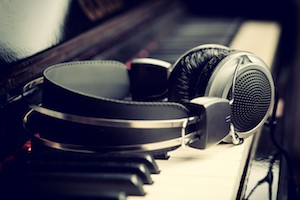 Ken wrote an article on the difference between dynamic and condenser mics in our post, What Is the Difference Between Condenser and Dynamic Microphones? And because it is often useful to read different “takes” on the same topic, we’ve linked below to an article from About.com that goes over the difference between the 2 main kinds of microphones, dynamic and condenser (yeah yeah, I know ribbon mics should be considered a 3rd “main type” but…) It is a good idea to understand these differences so you’ll know when and when not to use one or the other.
Ken wrote an article on the difference between dynamic and condenser mics in our post, What Is the Difference Between Condenser and Dynamic Microphones? And because it is often useful to read different “takes” on the same topic, we’ve linked below to an article from About.com that goes over the difference between the 2 main kinds of microphones, dynamic and condenser (yeah yeah, I know ribbon mics should be considered a 3rd “main type” but…) It is a good idea to understand these differences so you’ll know when and when not to use one or the other.
For those folks hoping to land voice over jobs with their microphones, for example, you almost certainly will need to use a condenser mic.
Here is the article: http://homerecording.about.com/od/microphones101/a/mic_types.htm
Cheers!
Ken
Recording Tips and Techniques
How Important Is Contrast In A Mix?
Today, our topic will be all about sonic contrast. This component is also a very important factor in making an excellent mix. Here’s an article from Audio Fanzine that talks about its importance in a mix.
Muting Tracks To Save CPU
Are you aware that you can set REAPER up so that muted tracks doesn’t require any CPU? You can always mute your unused tracks as an easy way to save CPU in your project. Click here to watch the video tutorial by The Reaper Blog.
Compressing Drum Overhead Mics
Here’s a video tutorial from The REAPER blog where it talks about applying compression for overhead mics using ReaComp and T-Racks White2A. CLICK HERE TO WATCH THE VIDEO.
Studio Headphones Being The Most Powerful Recording Tool

Did you know that studio headphones can represent one of the most powerful tools you can have for home recording?
I know this sort of flies in the face of the traditional recording advice, which says that listening to audio through loudspeakers – so that the audio comes through the air – is the best way to mix. In fact some of the old wisdom says “never mix with headphones.” And if we all had perfect acoustic listening spaces, that would be decent advice.
But in home studios, we almost NEVER have ideal acoustical spaces in which to listen to our recorded audio so that it sounds accurate to our ears when we listen through monitor speakers. So headphones offer us a way to sort of offset the negative distortions that a poor listening room can have on our recordings.
Of course, headphones can distort the audio in their own way. So if you approach your final audio edits and mixes with this in mind – and also listen to test mixes in other environments (in the car, on the home stereo, etc.), you can be much closer to an accurate and “portable” (will sound good played on any system) final product.
One other way in which headphones can provide us with superior audio is when editing voiceover recordings. Music can easily mask little noises and imperfections in vocal recordings, such as p-pops, mouth noises, and background sounds like hiss, computer hum, etc. And even without music to hide these things, it can still be quite difficult to hear them with just speakers. Headphones brings these things front-and-center, allowing you to clean up your vocal nicely.
Here’s what Graham has to say about this in an article by The Recording Revolution.
777